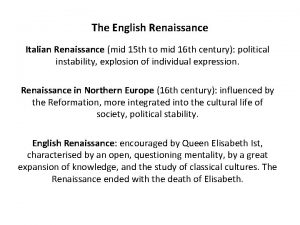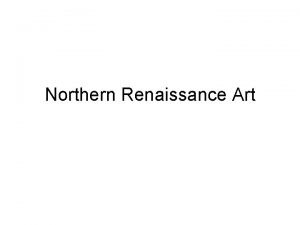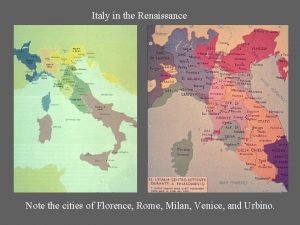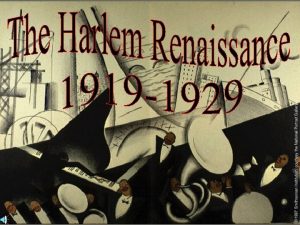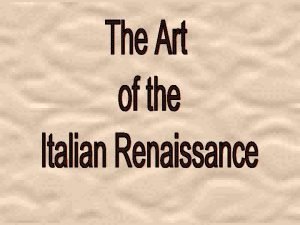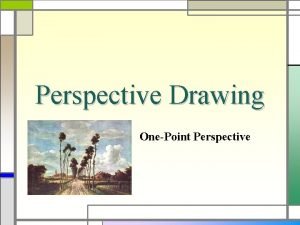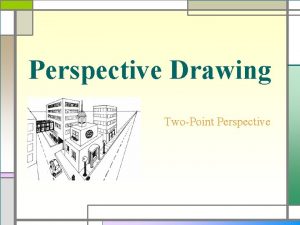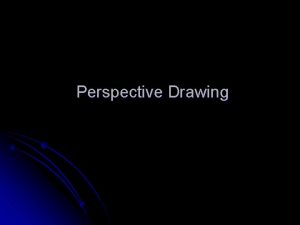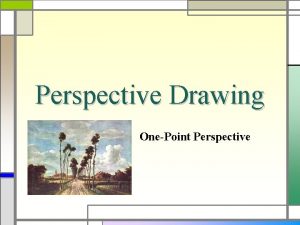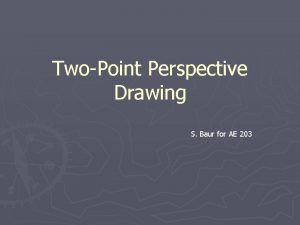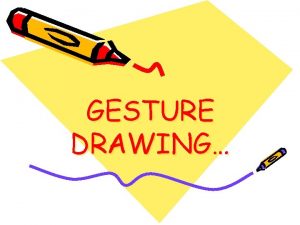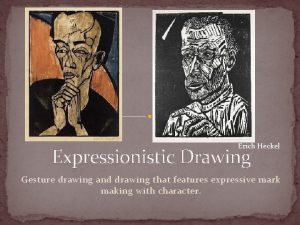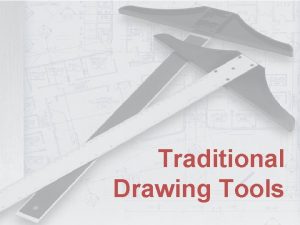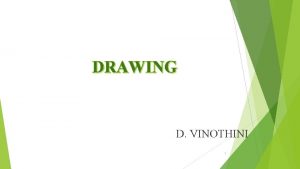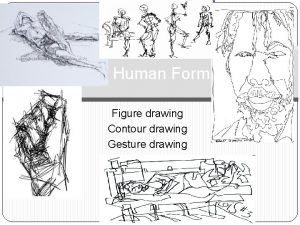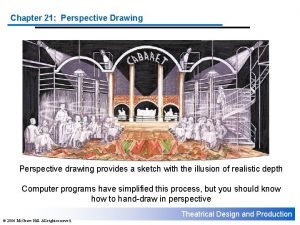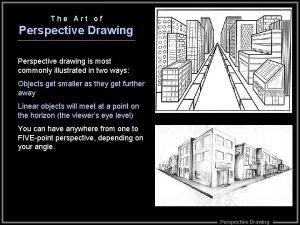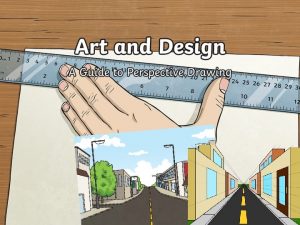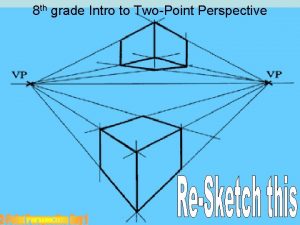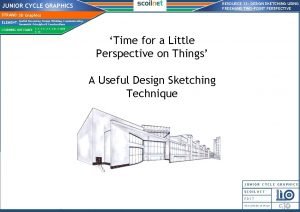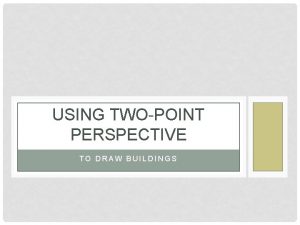Perspective Drawing TwoPoint Perspective Perspective During the Renaissance


























- Slides: 26

Perspective Drawing Two-Point Perspective

Perspective During the Renaissance artists became interested in making two-dimensional artwork look three-dimensional. Ø Renaissance- (1450 -1600): The Renaissance began in Italy and spread through Northern Europe. Art, Science, and Literature grew during this time. Ø

Perspective Ø Many of the earlier works artists created showed little depth. Ø Ø Does this picture reflect depth? Why or why not? How could this picture be changed to increase its’ depth? Kaufmann Haggadah. Spain, late 14 th C.

Perspective Artists used mathematics and close observation to invent linear perspective. Ø Linear perspective allows artists to trick the eye into seeing depth on a flat surface. Ø

Perspective Influential People during the Renaissance Ø Art: Ø Ø Ø Michelangelo Leonardo da Vinci Science Galileo Ø Literature Ø Shakespeare Ø Raphael, School of Athens, One-point linear perspective

Perspective Ø Many artists have used a variety of different techniques to show depth. However it was not until the Renaissance that artists developed a system to show depth logically and consistently.

Perspective Ø Linear Perspective: Based on the way the human eye sees the world. Ø Objects that are closer appear larger, more distant objects appear smaller. Ø To create the illusion of space the artists creates a vanishing point on the horizon line. Ø Objects are drawn using orthogonal lines, which lead to the vanishing points. Ø

Perspective Vanishing Point Ø The single point on the horizon where all the lines on the ground level seem to come together Ø Horizon Line Ø The place where the land the sky meet. Ø Orthogonal Line Ø Lines that connect to the vanishing point Ø

Perspective Can you locate the Horizon Line? Ø How did you determine this? Ø Can you find the vanishing point in this picture? Ø

Perspective The red line is the Horizon Line.

Perspective Can you locate the vanishing point?

Perspective

Perspective Objects seen at an angle would be drawn with two-point perspective using two vanishing points. Artwork with two-point perspective often has vanishing points "off the page".

Perspective Lines leading to the vanishing points are called orthogonals.

Perspective In two-point perspective the front edge of the form is seen as the closest point.

Perspective Draw a horizon line towards the top of your paper.

Perspective Make sure the end of the ruler (or side of the triangle) flush with the edge of the paper. If lines are not exactly vertical your drawing will be crooked.

Perspective Draw two vanishing points on the horizon line near the page edges.

Perspective Now draw a vertical line this is your front edge. Draw it in near the bottom middle of the page, so you have plenty of room to add more forms to your building.

Perspective Now connect the both ends of the front edge to both vanishing points. These are orthogonals. Draw lightly so you can erase!

Perspective Draw two vertical lines between the orthogonals where you want the back edges of your form to appear.

Perspective Now join the back and top corners to the opposite vanishing point to complete the top of the form.

Perspective Erase the extra orthogonals. Now you have a form drawn in two-point perspective!

Perspective

Perspective Your First Assignment: ü Create a drawing of boxes in 2 -point perspective. ü Stack Forms on top of each other ü Add Design or Texture to your box forms.

Perspective Your Final Assignment: üCreate a fantasy city using two-point perspective! üSketch out in pencil first. Add forms and details to create your city. üOutline with black sharpie marker. üPaint with watercolor to finish your city.
 The renaissance introduction to the renaissance answer key
The renaissance introduction to the renaissance answer key The renaissance outcome renaissance painters/sculptors
The renaissance outcome renaissance painters/sculptors Italian renaissance vs english renaissance
Italian renaissance vs english renaissance Northern renaissance art characteristics
Northern renaissance art characteristics The renaissance outcome the renaissance in italy
The renaissance outcome the renaissance in italy Causes of renaissance
Causes of renaissance Renaissance vs high renaissance
Renaissance vs high renaissance Italian renaissance vs northern renaissance venn diagram
Italian renaissance vs northern renaissance venn diagram Harlem renaissance inventions
Harlem renaissance inventions Map of harlem nyc
Map of harlem nyc During the renaissance, italian cities became centers of
During the renaissance, italian cities became centers of During the renaissance, humanist scholars ______.
During the renaissance, humanist scholars ______. What character trait was emphasized during the renaissance?
What character trait was emphasized during the renaissance? Physical education during primitive era
Physical education during primitive era Renaissance entertainment history
Renaissance entertainment history Which way does a horizontal line go
Which way does a horizontal line go Một số thể thơ truyền thống
Một số thể thơ truyền thống Thế nào là hệ số cao nhất
Thế nào là hệ số cao nhất Sơ đồ cơ thể người
Sơ đồ cơ thể người Lp html
Lp html Số nguyên tố là số gì
Số nguyên tố là số gì đặc điểm cơ thể của người tối cổ
đặc điểm cơ thể của người tối cổ Cách giải mật thư tọa độ
Cách giải mật thư tọa độ Các châu lục và đại dương trên thế giới
Các châu lục và đại dương trên thế giới Glasgow thang điểm
Glasgow thang điểm ưu thế lai là gì
ưu thế lai là gì Thẻ vin
Thẻ vin


